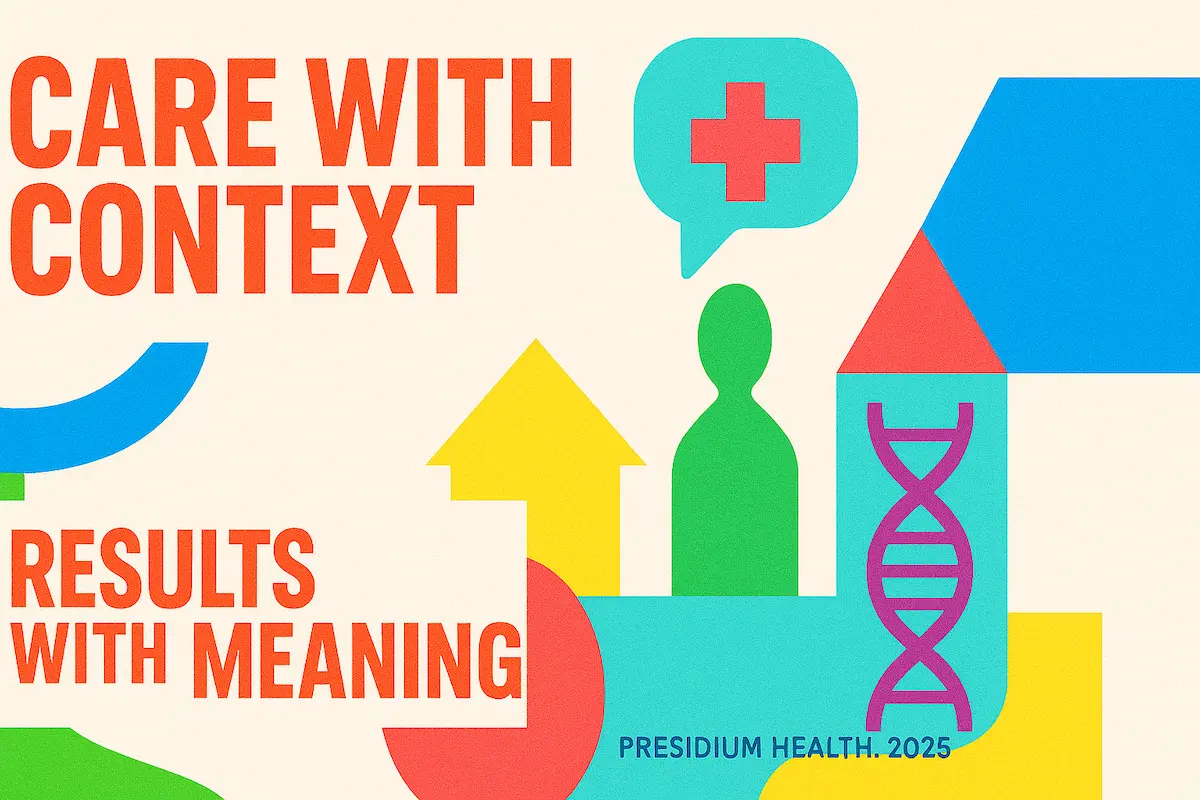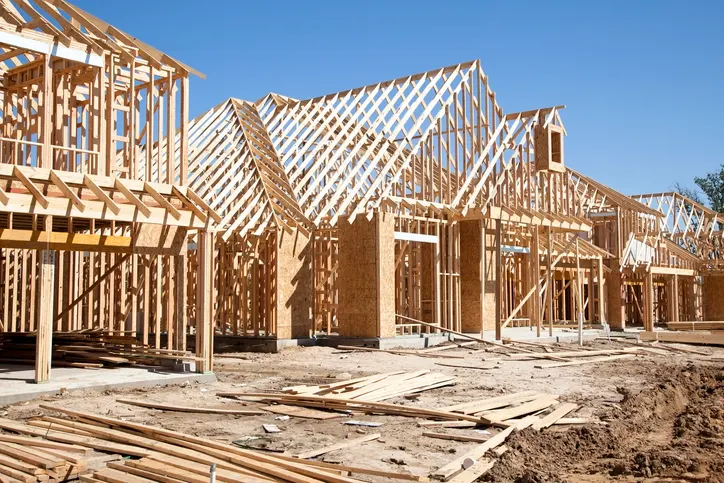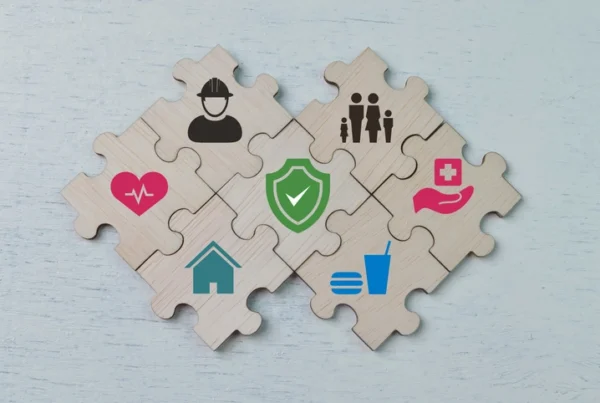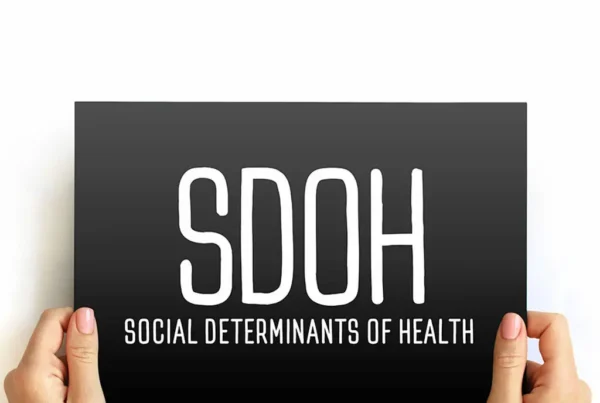
Introduction
Not all determinants of health are created equal. While “determinants of health” encompass the full spectrum of factors influencing our health—ranging from genetic factors and medical care to clean water and safe housing—“social determinants of health” (SDOH) focus more specifically on the nonmedical factors that shape our well-being. For broader context, visit our Social Determinants of Health resource hub to see how these concepts work together. These include social status, education level, food security, and early childhood development. Distinguishing between the two is essential for designing health care systems that move the needle on equity, life expectancy, and overall health.
Up to 80% of health outcomes are determined by social, environmental, and behavioral factors—far outweighing the influence of medical care alone. In response, U.S. healthcare is increasingly pivoting toward models that address both clinical and social root causes of disease, supported by initiatives like Healthy People 2030 and national efforts to reduce the 5-year gap in life expectancy between the highest and lowest income groups. This shift reflects a growing recognition that economic factors, educational access, and neighborhood conditions must be addressed in tandem with medical interventions if we are to achieve lasting health improvements.
Biology and Genetic Factors
Inherited traits, such as sex and predisposition to chronic illness, play a critical role in health status and can contribute to health inequalities across ethnic groups and indigenous peoples. For example, sickle cell disease disproportionately affects African American populations, and certain BRCA gene mutations are more prevalent in individuals of Ashkenazi Jewish descent—showing how genetics can influence risk but not necessarily determine outcomes without other social context.
Individual Behavior
Choices like tobacco use, physical activity, and diet influence not only mental health and disease control but also long-term quality of life. According to the CDC, nearly 80% of heart disease and stroke cases are preventable through lifestyle changes. However, personal behavior is often shaped by external influences, such as access to safe spaces for exercise or the affordability of nutritious foods. This interplay underscores why behavior cannot be isolated from its social context.
Social Environment
Social support, education level, and adverse childhood experiences (ACEs) have a huge impact on both mental and physical well-being. Studies show that young people exposed to chronic stress, community violence, or food insecurity are more likely to develop anxiety, depression, and chronic diseases later in life. Social isolation among older adults has also been linked to increased mortality and healthcare utilization.
Physical Environment
Access to safe housing, clean water, and urban development that supports healthy living environments affects the general population, but particularly vulnerable groups like older adults, children, and low-income communities. For example, substandard housing is associated with higher rates of asthma, injury, and lead exposure in children. Environmental risks such as air pollution and poor waste management remain significant risk factors for respiratory and cardiovascular diseases.
Healthcare Services
Availability of health services and healthcare access affects how early conditions are detected and managed. Still, medical care accounts for only a fraction—roughly 10–20%—of the modifiable contributors to population health. Preventive screenings, maternal care, and chronic disease management can make a critical difference, but without addressing barriers such as language, transportation, and cost, these services remain underutilized. Explore practical examples of social determinants of health to see these concepts in action.
Social Determinants of Health Within the Broader Framework
Social determinants of health sit within the broader category of health determinants but zero in on modifiable, community-driven conditions that explain health disparities. These include:
- Economic stability (e.g., unemployment, food insecurity)
- Education access and health literacy
- Neighborhood and built environment (e.g., transportation, pollution, housing)
- Social and community context
- Healthcare access and human services
These factors create a social gradient—where people with lower socioeconomic status experience poorer health outcomes. For example:
- Adults without a high school diploma are nearly three times as likely to report fair or poor health compared to college graduates.
- Communities facing food insecurity experience 32% higher rates of obesity and related chronic illnesses.
- Black women in the U.S. are three times more likely to die from pregnancy-related causes than white women, driven largely by systemic inequities and SDOH.
According to the National Institutes of Health, infant mortality rates in disadvantaged communities can be twice as high as the national average—underscoring the urgency of interventions that target upstream drivers. The growing evidence base shows that investments in housing, transportation, education, and job training not only support health but also reduce healthcare costs and improve good health across the lifespan.
Programs like CalAIM in California and Medicaid’s In Lieu of Services (ILOS) are advancing this shift, reimbursing services that fall outside traditional medical care, such as housing navigation, nutrition support, health promotion, and care coordination for those with complex needs.
Why It Matters For Care Delivery
Focusing only on medical care and genetic factors fails to account for the complex societal forces that drive health. For instance, two people with the same diagnosis can have dramatically different outcomes depending on their access to safe housing, quality education, and supportive social policies.
Neglecting social determinants leads to:
- 1 in 10 Americans delaying care due to transportation issues
- Overuse of emergency services, with frequent ED users often lacking stable housing or income
- Fragmented care for vulnerable populations
- Exacerbation of health inequalities
- Missed opportunities for disease prevention
On the other hand, integrating SDOH into care planning results in:
- Reduces inpatient admissions in high-risk populations
- Improves quality of life and health status
- Increases effectiveness of health care
- Aligns with national benchmarks
How Can Public Policy Impact The Determinants of Health In Communities?
Public policy can address the determinants of health by implementing initiatives that improve access to healthcare, promote healthy environments, and support education and economic opportunities. Policies that focus on nutrition, housing, and transportation can significantly enhance community well-being, reducing health disparities and fostering healthier lifestyles for all residents.
Will AB 130 Improve Health Equity—or Undermine It?
Assembly Bill 130 (AB 130), signed into law by California Governor Gavin Newsom in June 2025, represents one of California’s most far-reaching efforts to accelerate housing development by reforming the environmental review process. The bill exempts qualifying urban infill projects from the California Environmental Quality Act (CEQA), eliminating requirements for environmental impact reports, public input, and related litigation. While not framed as a public health bill, AB 130 functions as a determinants-of-health policy in effect—targeting upstream factors like housing access, urban infrastructure, and environmental safety. Supporters view it as a necessary step to cut red tape, reduce construction delays, and increase housing supply in high-demand areas. However, critics raise serious concerns about weakened oversight, the loss of environmental protections, reduced labor standards, and limited community engagement—factors that disproportionately affect low-income and marginalized neighborhoods. Environmental justice advocates warn that without equity safeguards, AB 130 could exacerbate health disparities and environmental burdens. The bill addresses the speed of housing production, but not the “who” or “how”—and its impact on health equity will ultimately depend on how it is implemented, monitored, and balanced with community protections.
Summary: How AB130 Affects People and The Determinants of Health

🏘 Housing Stability & Affordability
✅ Supporters: Speeds up construction of housing, potentially easing the statewide shortage and reducing rent pressure.
⚠️ Critics: Does not require affordable or low-income housing; may prioritize market-rate developments that gentrify poor neighborhoods.
🏙 Built Environment
✅ Supporters: Encourages infill and denser urban development, which could improve walkability, transit access, and proximity to services.
⚠️ Critics: Eliminates CEQA safeguards that protect against overdevelopment, pollution, and overcrowding in vulnerable areas.
🌱 Environmental Quality
✅ Supporters: Reduces sprawl and vehicle miles traveled by promoting urban housing.
⚠️ Critics: Removes environmental review that protects low-income communities from air, noise, water, and traffic impacts.
🚌 Access to Resources
✅ Supporters: Faster infill near job centers may improve access to employment, schools, and healthcare.
⚠️ Critics: Without community engagement, developments may be poorly planned and disconnected from public transit or social services.
💼 Economic Opportunity
✅ Supporters: Could stimulate construction jobs and related local economic activity.
⚠️ Critics: Waiver of prevailing wage undermines fair pay and job equity for construction workers, especially low-income and immigrant labor.
🗳 Civic Participation & Equity
✅ Supporters: Faster approvals streamline bureaucracy, reducing barriers to production.
⚠️ Critics: Limits public comment and strips communities—especially historically disenfranchised ones—of their voice in shaping development.
⚖️ Health Equity & Cumulative Risk
⚪ Supporters: No direct health equity benefits articulated in the bill.
⚠️ Critics: Without CEQA review, cumulative health impacts (e.g., pollution + housing stress + lack of green space) go unmeasured and unmitigated.
The long-term impact of California’s AB 130 remains to be seen. Whether it leads to healthier, more equitable communities—or exacerbates environmental and social disparities—will depend on how it is implemented and monitored.
What is clear, however, is that AB 130 exemplifies how public policy can profoundly influence the determinants of health. By reshaping access to housing, altering environmental safeguards, and redefining community input, the law touches on core drivers of population well-being. Housing security, neighborhood quality, and environmental exposure—all central to health outcomes—are now subject to a dramatically new policy landscape.
AB 130 stands as a reminder that health is not only made in clinics, but also in legislatures, zoning boards, and urban planning departments. As California watches the effects unfold, this law offers a critical case study in how state-level legislation can directly—and indirectly—shape the conditions in which people live, work, and thrive.
Presidium’s Integrated Approach
At Presidium Health, we believe good health depends on understanding the full picture. We begin with robust, whole-person assessments that go beyond medical history. These screenings are standardized, trauma-informed, and culturally relevant, enabling us to identify issues early and design individualized care plans. Our integrated model addresses both clinical needs and social realities by delivering Presidium Health’s wraparound services that align with public policy and population health priorities. Here’s how:
Comprehensive Assessments
Our assessments are longitudinal and dynamic—not just snapshots at intake. We screen for social needs like housing, food access, and transportation—touchpoints often overlooked in traditional care models. These assessments are guided by standardized tools used in Enhanced Care Management (ECM) under CalAIM and support risk stratification across Medi-Cal populations.
Multi-Disciplinary Teams
Our team includes clinicians, social workers, peer specialists, and community health workers. These teams collaborate across silos, using shared care plans and regular case conferencing. They don’t just treat disease—they remove barriers to care, help individuals navigate complex systems, and support long-term wellness. Our staffing model is built around trust, continuity, and cultural responsiveness, especially for Medi-Cal members and other populations historically underserved by traditional health systems.
Community-Based Partnerships
Presidium’s care delivery is deeply embedded in community infrastructure. We maintain strong relationships with food banks, housing agencies, shelters, transportation networks, public health departments, legal aid organizations, and faith-based institutions. These partnerships extend the reach of our care model beyond the exam room and into the environments where health is truly made or lost. We also work closely with counties and managed care plans to optimize access to Community Supports (ILOS) benefits.
By integrating nonmedical services directly into the care continuum, we make access seamless and immediate.
Health Equity In Action
Our interventions are culturally tailored, trauma-informed, and rooted in the best practices promoted by the World Health Organization and national SDOH frameworks. We prioritize equity in every care plan—because social status should never determine health status.
We recognize that structural inequities—such as racism, poverty, and discrimination—drive health disparities. At Presidium, equity is not a principle we aspire to—it is a standard we operationalize.
- We tailor care plans using cultural and linguistic matching wherever possible.
- We invest in workforce pipelines that reflect the communities we serve.
- We monitor disparities using disaggregated data across race, ZIP code, primary language, and other demographics.
- We measure outcomes not only by utilization metrics, but by impact on quality of life, social stability, and self-reported well-being.
Our equity efforts are also built into governance, training, and quality improvement frameworks—ensuring every level of the organization is aligned with inclusive, just care delivery.
Final Thoughts
Understanding the difference between determinants of health and social determinants isn’t just academic—it’s foundational for modern, equitable healthcare. While all determinants influence health, it’s often the social ones—like housing instability or food insecurity—that health systems can address directly. If you’d like to revisit the foundational definition, read our guide on what social determinants of health mean in public health. By addressing the examples of SDOH that disproportionately affect vulnerable populations, we can close the gap in health inequalities, extend life expectancy, and foster better health for all.
Presidium Health is committed to this mission—advancing health equity by turning insight into action and policy into practice.




